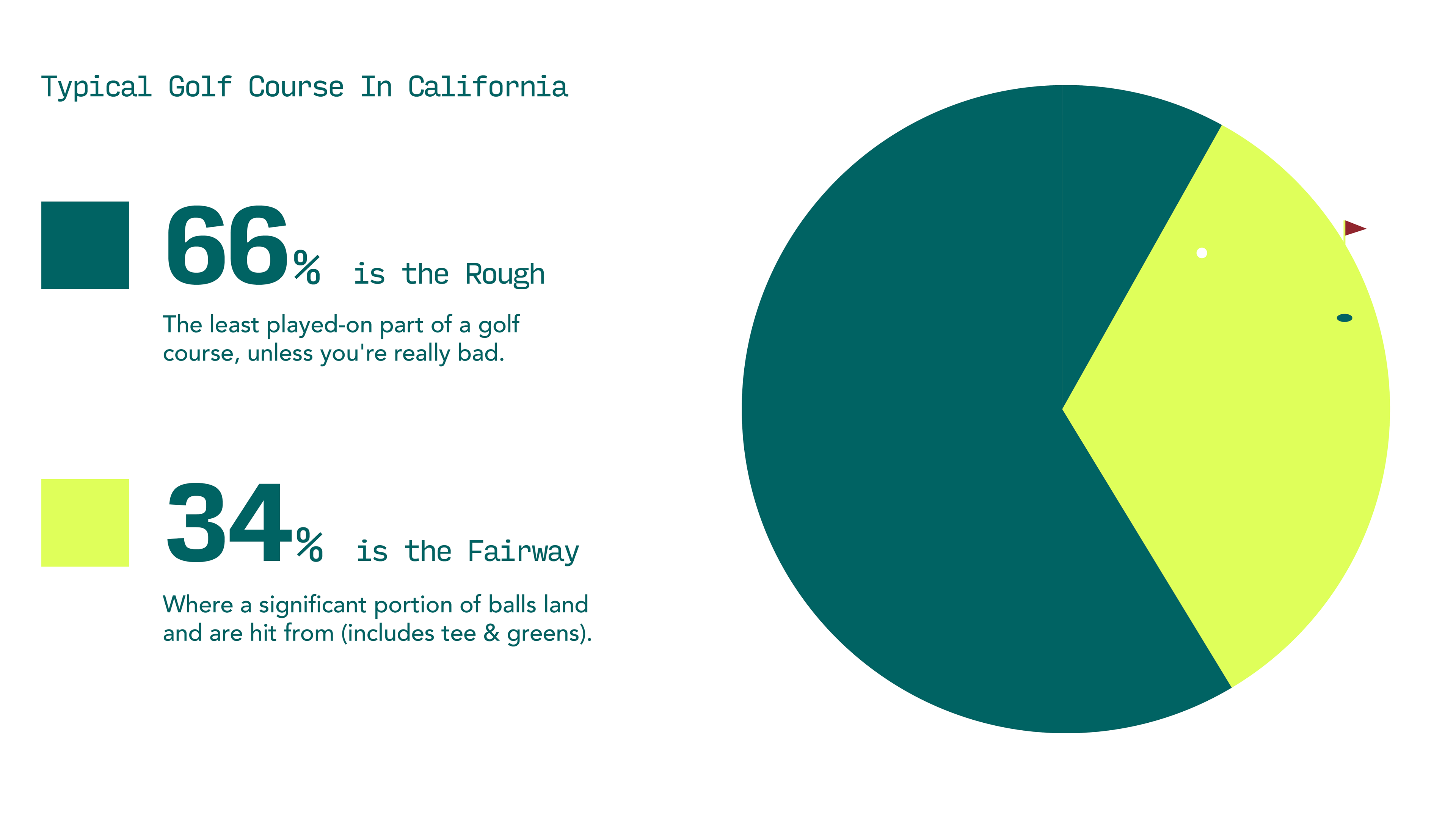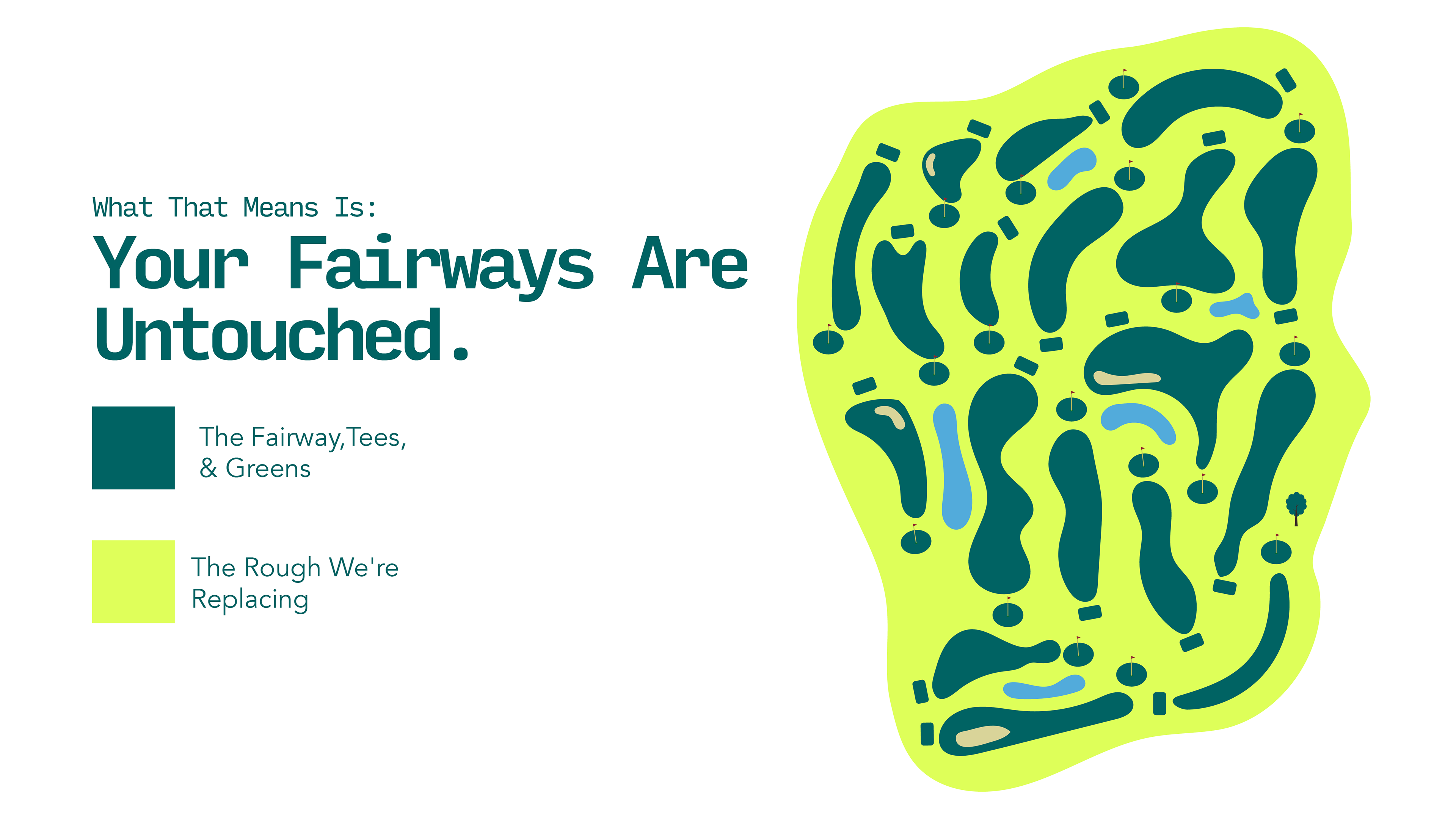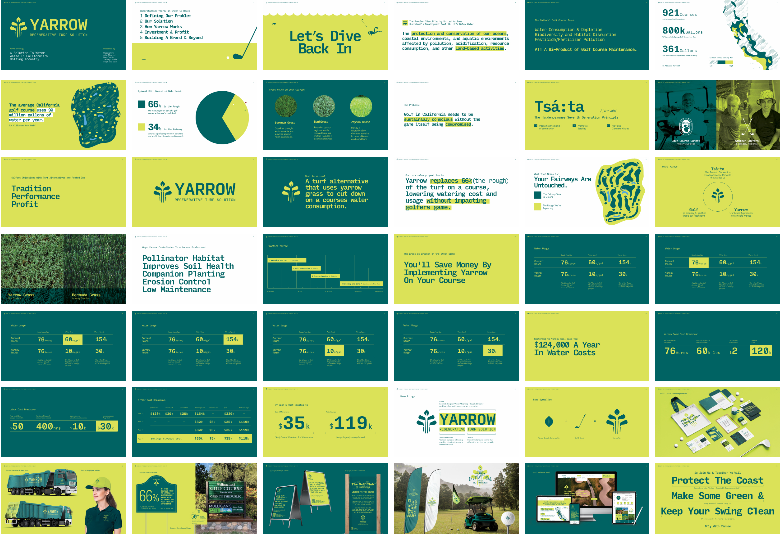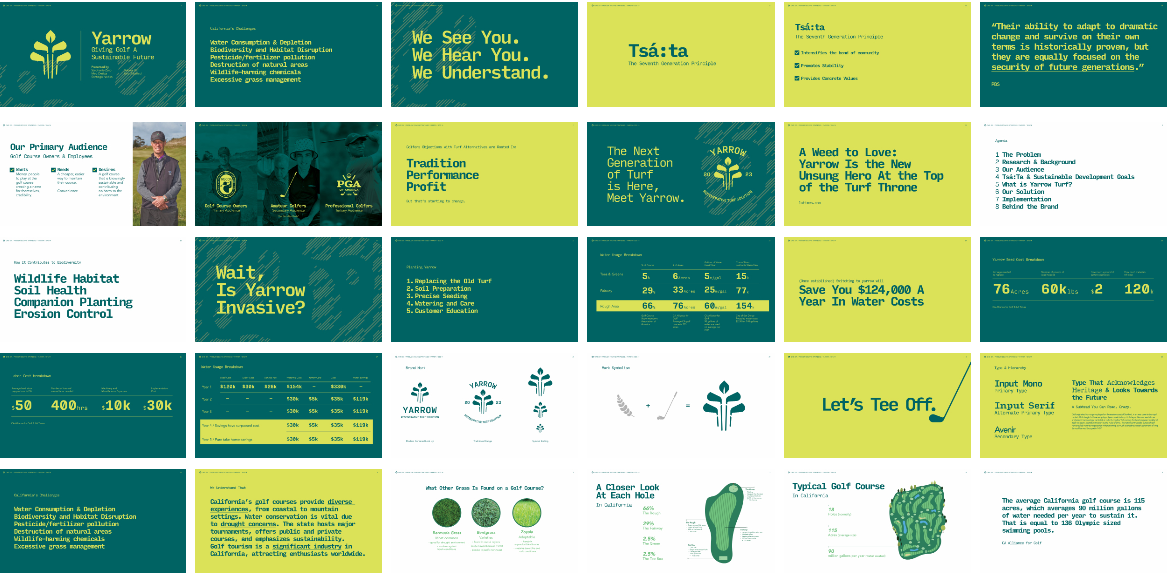The world's biggest environmental, political, social, and economic challenges are categorized by the United Nations Sustainable Development Goals. These SDGs are benchmarks for success and prosperity for Earth's future and are goals that must be met.
My fellow designers and I worked under these goals over 15 weeks to develop practical solutions to key problems, the result of that process was Yarrow.
Roles
This was a concept project where I was I served in the following roles across multiple teams and weeks.
Research & Development
Project Management
Brand Design Lead
Deliverables
Research and a fully developed design concept, brand strategy, brand package, and pitch presentation for potential investors.
Product, Brand, or Campaign
Brand Strategy
Pitch Deck
Brand Elements
Overview
Throughout this project, we used design thinking to guide our research and development for our final solution. A model of that process can be seen to the left, but I’ll also break it down in the process of our project timeline laid out below. Throughout this process, we were consistently researching to try to learn more about what can be done to improve our design to adhere to our audience's needs and make it an experience that they can be engaged in.
The Design Thinking Model
1 Understand: Empathize With Audience
2 Define: Identify Issues
3 Ideate: Generating Solutions (Never Stops)
4 Model: Realizing Ideas
5 Test: How A Solution Performs & Iterating
The Importance of Sustainable Development Goals
As defined by the United Nations, the 17 Sustainable Development Goals are an urgent call for action by all countries - developed and developing - in a global partnership. They recognize that ending poverty and other deprivations must go hand-in-hand with strategies that improve health and education, reduce inequality, and spur economic growth – all while tackling climate change and working to preserve our oceans and forests.
The three goals below are areas of focus I was involved in over this 15-week process.
Phase 1 / Zero Hunger
We spent weeks simply asking questions and doing research to understand the multiple levels of issues that existed within a broad topic like ‘Zero Hunger’. To ease that process, we broke down problems & solutions by their geographic scope: local, regional, national, and entrepreneurial. Thinking of ways to attack this issue at every level; you cannot end hunger everywhere in one small swoop so how do we bring a designed solution to fruition that at least contributes towards growth and advances towards our SDG’s targets?
In addition to internet research, we went into the field to regional farmers markets that became a point of emphasis for our project.
That field research led to three takeaways that would inform the work of the next group to pursue a solution in this SDG:
Effectiveness of Digital Communication & Resources
Having a Brand (as a market & farmer)
Importance of building infrastructure in high-variance weather regions
Phase 2 / Good Health & Wellbeing
Ready to get engaged to your idea? Well to bad because it’s at this point we entered phase two, which meant the adoption of a new SDG, problem, and rough idea.
The idea we took and continued to work on refining towards something that could be designed and was actionable was: A business that supports Minority and Low-Income Mothers in Syracuse through providing services such as a deliverable maternity package/box, a shuttle service, as well as educational resources and a potential collaboration with Joseph’s House, a center for expecting or homeless mothers in Syracuse. The goal of the business would be to support Mothers facing adversity when it comes to pregnancy and natal care, to help lower the child mortality rate in Syracuse.
Empathizing With A New Audience Through Talking With Experts & Examining Testimonials
Establishing a line of communication with healthcare experts, OBGYN specialists, and following interviews with Douala (pre and postnatal) care experts for black women and expecting mothers helped us understand the experience that our audience went through, the prejudice, discrimination they felt in hospitals, and often lack of care that lead to the death of many children during and after birth in the black Syracuse community.
The biggest takeaways we made during our continued research and ideation, that ended up being passed on to the next team in the final phase were:
There is blatant built-in racial bias and neglect in the Healthcare system (Nationally & in Onondaga County).
Black women's experience in hospitals has been overwhelmingly negative, and many may not even make it to a hospital for birth.
There is only a minor number of healthcare professionals here in Onondaga County that represent these communities (13%) and are trying to connect with the black community.
A Pause For Understanding: This process was not straightforward
We have jumped around in this design thinking process that was first presented as a straightlist. It is not a strict order. We find ourselves getting to a point where we feel we can ideate, but the contribution of a new topic, a new problem, takes us back to a point of understanding and defining. Some weeks we presented solutions or research that prompted us to go back and dig deeper before moving forward
As you’re about to see, even when we get to model, we’ll continue to return to those initial three phases, all the way until the end.
Phase 3 / Life Below Water & Yarrow
Once we got to our final groups, the research we'd done and others had done laid the groundwork for us to define a clear problem, audience, and needs, and began to develop a solution.
The Problem
1 Golf courses in California use over 800 thousand gallons of water a day to maintain their courses though there is a large portion of the course outside that fairway and green that is rarely played on
2 Over-watering affects native habitats and their biodiversity, as well as runoff from the course, can pollute surrounding bodies of water
3 Solutions to water-demanding grass like alternative turf are looked at poorly due to its believed effects on a player's performance and also the unnatural feeling most artificial turf has.
The Answer
Yarrow, a type of grass native to California, thrives in many different environments, with little maintenance (watering) required for survival.
In addition, Yarrow has been used before and unlike other turf alternatives, it resembles grass to a tee and performs just the same.
Wait wait wait. How did you go from life below water to golf courses?
It's simple really. Throughout the weeks of researching and presenting on this subject, it became clear that our biological habitats that existed below sea level and in smaller bodies of water were heavily influenced and affected by the actions we take on land, and the overconsumption of golf courses is a prime example of that.
Phase 3 / From Idea To Strategy, to Brand
Through our research to understand these issues, and speaking to golf players and owners we established two concrete audiences for this product. Identifying these two audiences made it clear that the most common things when it comes to the turf used on golf courses are:
Tradition, Performance, Profit
A principle that we inherited from a previous group was the idea of:
Ja'Da is an idea from Haudenosaunee culture that our actions today should have a positive impact on seven generations into the future.
Ja'da helps guide us to make a brand that won't just be sustainable today but is looking forward to long-standing sustainability in the long term.
A Roadblock, and a Pivot
We realized after research that using Yarrow on an entire course was not going to work. Something that ambitious required buy-in from golfers and course owners, and there was too much superstition surrounding "alternative turf" being used because players thought it affected their performance on the green and that not good for business.
Through some research, examining parts of the golf course, 66% of your standard 18-hole course, known as the rough was less frequently played on because the way it was maintained was not ideal to play on.
That was exactly the part of the course we needed to go after.


Brand Pillars
At this point, the pieces are in place, we’ve done the research, we understand and talked to our audience, we know this issue we’re addressing, and we have a solution. The brand we were building was defined by these three pillars we had identified to this point.
Brand & Pitch Development
This is just a snippet of over 300 slides we presented over multiple weeks as we refined what Yarrow was and what our pitch to potential investors and consumers would be.


Brand Creation
We've really been creating the brand this entire time, but now we started to actually design and put a face to a name. But wait, what name?
Maybe it was the obvious choice, but the name we chose ended up being the name of our product, and the heart of this entire solution: Yarrow.
Yarrow represented and hit on multiple aspects of our brand including the tradition and legacy of golf, and I was able to tie it back to the Seventh generation Principle and the service we provide with our descriptor.
Building out the brand felt like the easiest part of all this. We knew we needed to speak to golfers and golf course owners alike, and wanted something that was palatable to this community but also clearly sustainable and progressive in what we wanted to achieve.
We spoke to our audience first through brand communications, what mailers and information materials being sent to courses looked like, then what signage on a course or in a lobby would be, and what we were saying to the audience of golfers concerned with what Yarrow was.
We continued to build out this story to a digital presence on the web and social media.
We also had to envision what the installation process of Yarrow looked like from a service perspective. What would our customers ee when we visit their course to replace the rough?
And of course, a Yarrow-sponsored invitational that would show golfers how invested we are in their sport and build a report with this community we're trying to gain the trust of.
The last thing I'll say to you is this.
I'd like to give a special thank you to everybody with whom I worked throughout this entire process;
Brenna Phelan, Debora Kim, Eleni Cooper, Eva Morris, Jacques Megnizin, Julai Albarrici, Meg De Titta, Stephanie Zaso, and Yesmene Chikha
